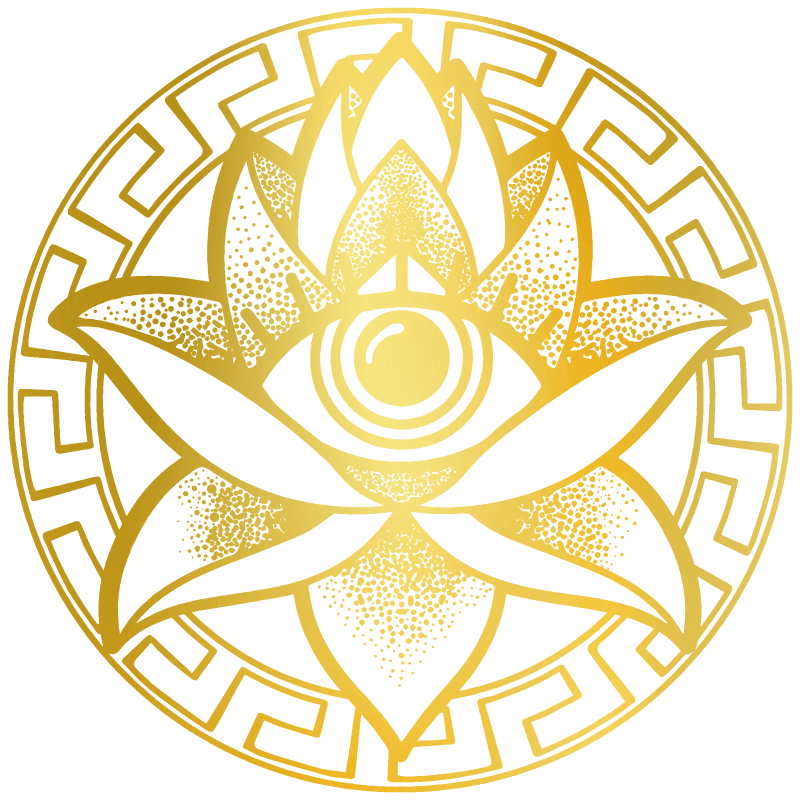The Blue Lotus flower (Nymphaea caerulea), once revered in ancient Egypt as a symbol of rebirth and transcendence, has re-emerged as a star ingredient in the modern alternative healing movement. Known for its calming, euphoric, and heart-opening properties, this ethereal bloom has captured the attention of wellness enthusiasts, herbalists, and spiritual seekers around the world.
In today’s world of stress and overstimulation, the Blue Lotus has become a bridge between ancient plant wisdom and modern holistic practices, offering a natural path to balance, relaxation, and mindfulness.
The Ancient Roots of the Blue Lotus
A Sacred Flower of the Pharaohs
In ancient Egypt, the Blue Lotus was not just a flower—it was a divine emblem. Pharaohs, priests, and mystics used it in sacred rituals and dream ceremonies, believing it connected the soul to higher states of consciousness. Carvings and tomb art depict Egyptians holding Blue Lotus blossoms during religious ceremonies, symbolizing spiritual enlightenment and resurrection.
The flower’s psychoactive alkaloids, including apomorphine and nuciferine, were thought to induce gentle euphoria and heightened awareness—qualities that made it a natural tool for meditation and divine communication.
Rediscovery in Modern Times
From Archaeology to Herbal Medicine
Fast-forward to the 21st century, and the Blue Lotus has found a new life in alternative wellness communities. Its historical mystique, paired with growing interest in natural relaxation aids, has made it a sought-after botanical for tea blends, tinctures, essential oils, and herbal smoking mixtures.
Wellness practitioners and herbalists began reintroducing Blue Lotus to the public through ethnobotanical research and holistic wellness channels. This revival coincided with the surge in plant-based therapies and natural nootropics, bringing the flower’s ancient magic into modern practice.
The Science Behind the Serenity
Natural Compounds That Calm and Elevate
The Blue Lotus owes its effects to two primary active compounds—apomorphine and nuciferine.
-
Apomorphine acts as a dopamine agonist, subtly influencing the brain’s pleasure and motivation centers.
-
Nuciferine provides sedative, antispasmodic, and antipsychotic properties, promoting relaxation and balanced mood.
Together, these compounds create a mild yet noticeable state of calm euphoria, making Blue Lotus a natural alternative for those seeking stress relief without pharmaceuticals.
Research suggests that its adaptogenic potential—the ability to help the body adapt to stress—makes it beneficial in holistic mental wellness routines.
Blue Lotus in Modern Healing Practices
1. Aromatherapy and Relaxation
Blue Lotus essential oil is cherished in aromatherapy for its luxurious scent and soothing effect. A few drops in a diffuser can promote deep calm, reduce anxiety, and elevate mood. Spa practitioners often use Blue Lotus oil in massage blends, invoking both physical relaxation and emotional grounding.
2. Herbal Teas and Elixirs
The most popular form today is Blue Lotus tea. When steeped in hot water, the petals release compounds that induce relaxation and enhance dream recall. Many users report a peaceful, lucid dream state, making it a favorite among meditation practitioners and lucid dreamers.
3. Spiritual and Mindfulness Rituals
In spiritual healing, Blue Lotus is seen as a heart-opening plant ally. Used in sound baths, meditation, and yoga, it helps participants achieve emotional release and deeper awareness. It’s often combined with other botanicals like blue butterfly pea or damiana to enhance sensory and energetic effects.
4. Alternative Therapies and Microdosing
Some holistic therapists incorporate Blue Lotus microdosing in guided ceremonies, where its mild psychoactive effects support emotional healing and introspection. When used respectfully, it can deepen mindfulness and foster emotional clarity.
Why the Blue Lotus Resonates Today
Natural Calm in a Fast-Paced World
In a world dominated by screens, noise, and constant demands, people are seeking gentler forms of healing—those that don’t rely on synthetic substances. The Blue Lotus offers a natural, ancient alternative to the overstimulated modern mind.
Its non-addictive nature, coupled with its pleasant sensory experience, makes it appealing to those exploring plant-based relaxation, natural sleep aids, and non-pharmaceutical mood enhancement.
Aesthetic and Emotional Appeal
Beyond its effects, Blue Lotus has a unique aesthetic and symbolic power. The mesmerizing blue petals evoke calm and purity, while its aroma encourages introspection. It embodies the balance between mind, body, and spirit that so many modern healing practices aspire to achieve.
Blue Lotus in Popular Culture and Wellness Brands
The Blue Lotus has also made its mark in modern wellness branding. From herbal apothecaries to luxury spa lines, it’s being featured as a key ingredient in botanical blends, skincare products, and aromatherapy collections.
Wellness influencers and holistic practitioners often highlight Blue Lotus in social media rituals—tea ceremonies, spiritual baths, and intention-setting sessions—showcasing it as both aesthetic and therapeutic.
Its popularity has grown alongside other ancient botanicals like mugwort, reishi, and ashwagandha, forming a new generation of ritual wellness products.
How to Use Blue Lotus Safely
Responsible Use and Preparation
When integrating Blue Lotus into your wellness routine, purity and sourcing matter. Choose organic, sustainably harvested petals or extracts to avoid contamination or adulteration.
-
For tea, steep 1–2 grams of dried petals in hot water for 10–15 minutes.
-
For tinctures, follow dosage guidelines from trusted herbal producers.
-
For aromatherapy, use diluted essential oil blends.
Avoid excessive use, especially in combination with alcohol or sedatives, as its natural alkaloids can enhance relaxation effects.
The Future of Blue Lotus in Alternative Healing
As interest in plant medicine and holistic wellness continues to grow, the Blue Lotus stands poised to remain a cornerstone of natural healing culture. Its dual identity as both a scientifically intriguing adaptogen and a spiritually revered symbol gives it enduring appeal.
Emerging studies on its neurochemical and antioxidant properties are beginning to validate what ancient civilizations already knew: nature offers powerful tools for emotional balance and spiritual growth.
Conclusion
From the temples of ancient Egypt to the meditation rooms of today’s healers, the Blue Lotus continues to enchant and heal across millennia. It represents the meeting point between science and spirituality, offering a gentle, holistic approach to wellness that feels both timeless and transformative.
As the world turns increasingly toward mindfulness and natural medicine, the Blue Lotus stands as a serene reminder that true healing often begins in nature—and blooms from within.
FAQs
1. What are the main benefits of Blue Lotus?
Blue Lotus is known for its calming, mood-enhancing, and mildly euphoric effects. It supports relaxation, stress relief, meditation, and lucid dreaming while helping balance emotional energy naturally.
2. Is Blue Lotus safe to use daily?
Yes, when used in moderate amounts, Blue Lotus is generally considered safe. However, overuse or combining it with alcohol or sedatives may intensify its relaxing effects. Always source organic, pure Blue Lotus and follow recommended dosages.
3. How is Blue Lotus commonly consumed?
Blue Lotus can be enjoyed as tea, tincture, essential oil, or herbal smoke blend. The most popular method is steeping dried petals in hot water for a soothing, aromatic tea that promotes calm and deep rest.
4. Does Blue Lotus cause hallucinations or psychoactive effects?
Blue Lotus is not hallucinogenic like stronger plant medicines. Its effects are gentle and meditative, bringing mild euphoria, relaxation, and heightened dream clarity rather than visual hallucinations.
5. Can Blue Lotus help with anxiety or sleep issues?
Yes. Many users find that Blue Lotus tea or oil helps reduce stress, anxiety, and restlessness. Its natural sedative compounds support better sleep quality and emotional relaxation, making it a popular choice in modern alternative healing routines.

